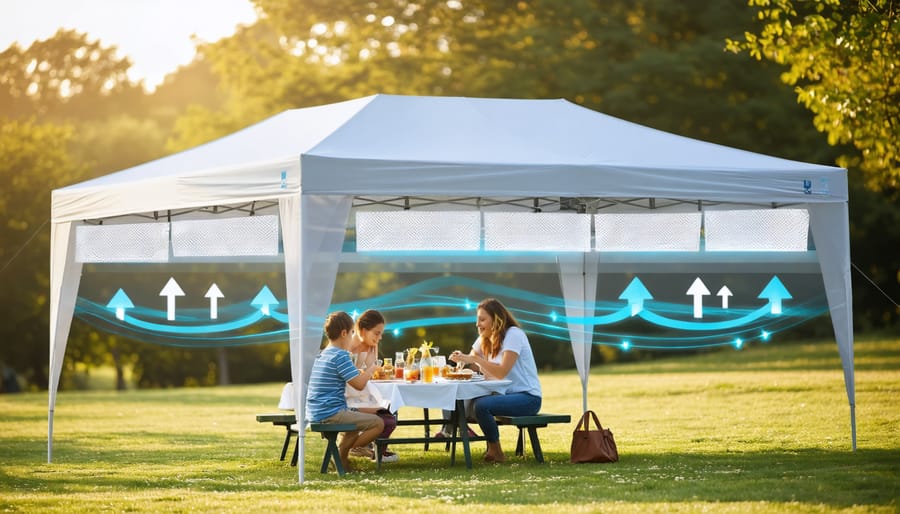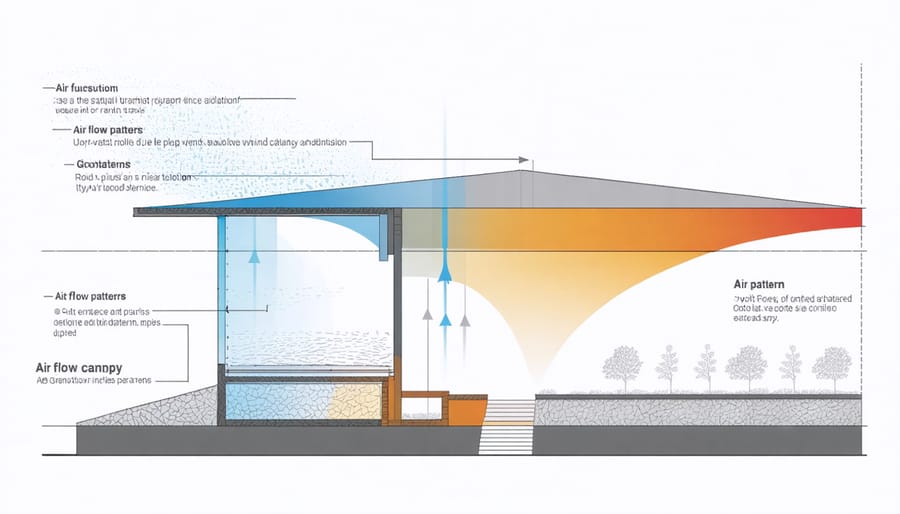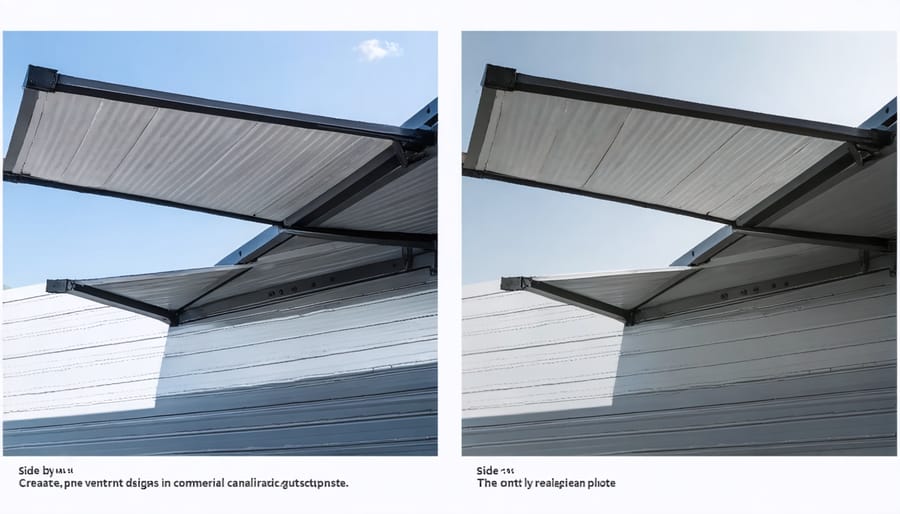Vented Canopies: The Smart Solution for Better Outdoor Coverage

Discover the versatile world of vented canopies, the innovative outdoor canopy solutions engineered to maximize airflow and comfort in any outdoor setting. Unlike traditional canopies, these smart structures feature strategically placed mesh panels or vents that prevent hot air from becoming trapped underneath, creating a more pleasant environment for gatherings and events. The vented design also offers enhanced stability by allowing wind to pass through rather than creating potentially dangerous uplift, making them ideal for both temporary and semi-permanent installations. Whether you’re hosting a backyard party, setting up a farmer’s market stand, or creating a comfortable outdoor workspace, a vented canopy provides superior protection from the elements while maintaining optimal air circulation. This practical combination of shelter and ventilation has made vented canopies increasingly popular among homeowners and event planners who prioritize both functionality and comfort in their outdoor spaces.
How Vented Canopies Work
The Science Behind Air Flow
The key to a vented canopy’s effectiveness lies in its ingenious airflow design. When wind hits the canopy, it creates two distinct pressure zones: high pressure underneath and low pressure above. Without proper ventilation, this pressure difference can cause dangerous uplift, potentially destabilizing the entire structure. The vent acts like a pressure release valve, allowing air to flow through the canopy rather than getting trapped beneath it.
The strategic placement of vents creates a chimney-like effect, where hot air naturally rises and escapes through the top while cooler air circulates below. This continuous airflow not only prevents the canopy from becoming a sail in strong winds but also helps maintain a comfortable temperature underneath. The size and positioning of these vents are carefully calculated to maximize stability while ensuring optimal air circulation, making vented canopies significantly more reliable than their non-vented counterparts, especially in challenging weather conditions.

Vent Design Types
Vented canopies come in several innovative designs, each offering unique advantages for different situations. The most common type is the peak-vent design, featuring a mesh opening at the highest point that allows hot air to escape naturally. Side-vented models incorporate mesh panels along the walls, providing excellent cross-ventilation ideal for warm climates or cooking areas.
For maximum airflow, multi-vent designs combine both peak and side ventilation, making them perfect for large gatherings or commercial use. Adjustable vent systems offer flexibility with panels that can be opened or closed depending on weather conditions. Some premium models feature integrated fan systems that actively circulate air, though these typically require power sources.
The gable-vent design, popular in permanent installations, includes triangular vents at both ends, creating a natural chimney effect. For those prioritizing weather protection, offset vent designs provide optimal airflow while maintaining excellent rain resistance.

Key Benefits of Vented Canopies
Enhanced Wind Resistance
A vented canopy’s clever design works wonders in managing wind forces that could otherwise pose a risk to your outdoor structure. The strategically placed vents allow air to flow through the canopy’s surface, significantly reducing uplift and lateral stress. Think of it like opening windows on both sides of your house on a breezy day – the air moves through naturally instead of creating pressure. This enhanced wind resistance means your canopy is less likely to become damaged or dislodged during strong gusts, making it a more reliable and durable choice for long-term outdoor use. Many homeowners find that vented canopies remain stable even in conditions that might challenge traditional solid-top structures, providing peace of mind during varying weather conditions.
Temperature Control
A vented canopy excels at maintaining comfortable temperatures through its smart design. The strategically placed vents allow warm air to escape naturally, creating a pleasant cooling effect beneath the structure. During hot summer days, this improved air circulation prevents the trapped heat that often makes traditional canopies uncomfortable. The continuous airflow also helps regulate humidity levels, making the space more enjoyable for gatherings or outdoor activities. Even on warmer days, you’ll notice a significant difference in comfort compared to non-vented alternatives. The natural convection process works tirelessly to maintain a refreshing environment, making your outdoor space more inviting throughout the day. This temperature control feature is particularly valuable for hosting events or creating comfortable outdoor living spaces where guests can relax without feeling overwhelmed by heat.
Durability Factors
A well-constructed vented canopy offers exceptional durability thanks to several key structural advantages. The ventilation system not only promotes airflow but also reduces wind stress on the frame and fabric, significantly extending the structure’s lifespan. When properly installed, these canopy storage solutions can withstand various weather conditions, from heavy rain to moderate wind gusts. The reinforced corners and sturdy frame design distribute weight evenly, preventing sagging and maintaining structural integrity over time. Additionally, the vented design helps prevent moisture accumulation, which could otherwise lead to mold growth or material deterioration. Most quality vented canopies feature UV-resistant materials and weather-sealed connections, ensuring they remain a reliable shelter option for years to come.
Choosing the Right Vented Canopy
Size and Coverage Considerations
When choosing the right canopy, size and coverage are crucial factors to consider. A good rule of thumb is to add an extra 2-3 feet on each side beyond your intended coverage area. This ensures adequate protection from sun and rain, even at different angles. For residential use, common sizes range from 10×10 feet for small patios to 20×20 feet for larger gatherings or storage needs.
Consider the height of your vented canopy as well. A minimum clearance of 7 feet is recommended for comfortable movement underneath, while peaked centers typically reach 9-12 feet. Remember to account for your property’s dimensions and any obstacles like trees or power lines. For sloped areas, opt for adjustable leg heights to ensure proper stability and water runoff.
Always check local building codes and HOA regulations, as some areas have specific size restrictions for outdoor structures.
Material and Build Quality
Vented canopies are typically constructed from high-quality, weather-resistant materials designed to withstand various outdoor conditions. The most common materials include heavy-duty polyester, vinyl-coated polyester, or commercial-grade PVC. These materials offer excellent durability while remaining lightweight enough for practical use.
The frame structure usually consists of powder-coated steel or aluminum tubing, providing robust support while resisting rust and corrosion. Quality models feature reinforced corner joints and sturdy connectors that enhance stability during windy conditions.
The vented top section is carefully engineered with mesh panels or strategic openings that maintain the canopy’s structural integrity while allowing air circulation. Premium models often include double-stitched seams, heat-sealed connections, and UV-resistant treatments to extend the product’s lifespan.
Additional features may include adjustable height settings, quick-release buttons for easy assembly, and protective covers for storage. Some manufacturers also incorporate water-resistant treatments and fire-retardant properties for enhanced safety and functionality.
A vented canopy is a smart investment for anyone seeking reliable outdoor shelter with enhanced stability and comfort. These innovative structures offer superior ventilation, reduced wind stress, and better temperature control compared to traditional canopies. By choosing a vented design, you’ll enjoy extended durability, improved air circulation, and greater protection for your outdoor activities. Remember to consider your specific needs, including size requirements, weather conditions, and intended use when selecting your vented canopy. With proper installation and maintenance, a quality vented canopy will provide years of dependable service while creating a comfortable, protected outdoor space for gatherings, storage, or commercial applications. Make the most of your outdoor area by choosing a vented canopy that combines practicality with intelligent design.

